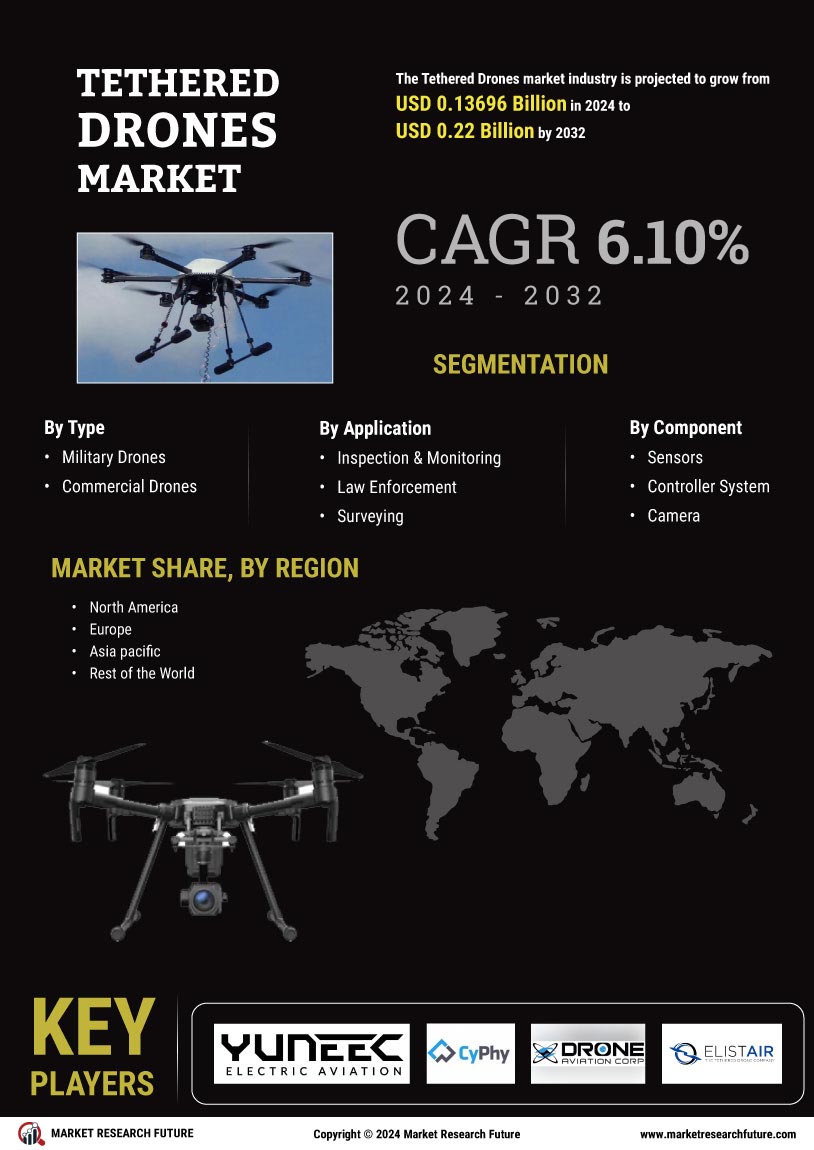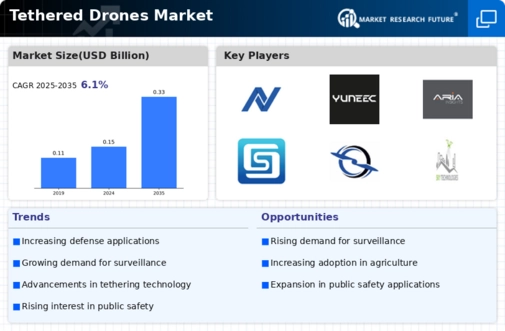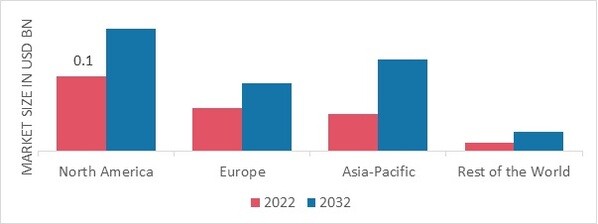Growing demand for drones in telecommunications is driving the market growth.
The market CAGR for tethered drones is being driven by the rising demand for drones in telecommunications. Drones are used to check towers because they can capture photographs, videos, and data about the tower and immediately transfer them to the carrier network, reducing inspection time and physical labor. Carriers also employ drones for radio planning and line-of-sight testing to find the best sites and heights for antenna installation. Tethered drones aid in the creation of ad hoc networks, the improvement of cellular coverage, and the provision of connection in remote regions.
Furthermore, tethered drones may transport antennas and other transmitting equipment while also serving as interim transmission towers if natural disasters inflict irreversible damage to transmission towers.AT and T deployed tethered drones to re-establish communications over Mexico Beach and the surrounding region in October 2018, allowing first responders such as police, first responders, and firemen to re-establish communications and aid in coordinating rescue efforts. The Flying COW drone can serve 6,500 clients at once, allowing AT&T customers to receive information on their disaster recovery and communicate with their relatives following Hurricane Michael's destruction.
As a result, demand for tethering drones will likely rise over the forecast period, propelling the market forward.
Drones provide high-resolution observation, long-range precise strikes, and dogfights. This has driven technology suppliers to create EO/IR payloads that are tiny enough to offer effective heat dissipation while yet meeting industry standards. Increased computing power is predicted to increase the capabilities of integrated infrared cameras, making such systems more appealing to the aerospace and defense industries. The miniaturization of commercial off-the-shelf (COTS) technology enables the production of low ISR solutions for the market's smallest UAVs. As a result, both defense and commercial operators have purchased tiny and micro UAVs.
The enormous tactical advantages of a tiny UAV on the battlefield have resulted in major investments in research and development and purchasing such technology.
Designers of infrared sensors for aerospace and defense applications are concentrating on developing EO and IR sensors. They are enhancing IR sensor resolution to match visible-light sensor resolution, multispectral sensing and imaging, combining IR sensors with laser range finders, and shrinking IR sensor packages for unmanned vehicles and other tiny applications. With the advent of modern integrated computer systems, it is now possible to incorporate more advanced payload systems on tethered drone platforms, making them ideal for a wide range of mission profiles in various terrain/environments.
This is expected to accelerate the deployment of tethered drones in various industries, resulting in increased demand for tethered drones and associated systems. Thus, driving the Tethered Drones market revenue.
The increasing demand for real-time surveillance and communication capabilities is driving innovation and investment in the tethered drones sector, suggesting a transformative impact on various industries.
Federal Aviation Administration (FAA)




















